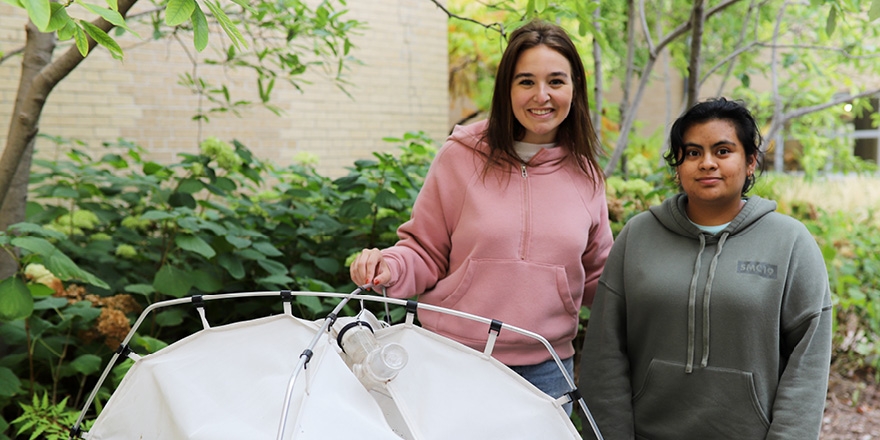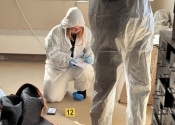
Pollinator Project Looks to Reduce Turf Grass on CSM Campus
Dr. Amanda Roe, associate professor of biology, was trying to determine how College of Saint Mary could lessen the amount of turf grass on campus when she attended the Entomological Society of America Conference in November 2021. A breakout session during the conference included information on pollination studies on college campuses across the country. “I had a lightbulb moment,” she said. “This might be a way to justify getting rid of turf grass.”
Dr. Roe’s plan would allow students to do research to find out what the pollinator community was on CSM’s 40-acre campus. Then, they could increase the number of pollinators by replacing some of the turf grass with native and prairie plants, bringing in a healthier, more diverse set of pollinators. “Not only would it increase the pollinator numbers, but it would also mean fewer resources,” she said. It’s less maintenance, you don’t have to mow it, and you don’t have to water it once it’s established.
The idea also aligned with the Sisters of Mercy’s critical concern on the environment.
Dr. Roe reached out to CSM alumna Barbie Hayes, who is involved in the Glacier Creek Preserve, located northwest of Omaha, for insight. The preserve is ag land that was transformed back to native prairie land. “In the process of that conversation, Hayes offered to pay for student stipends to get students involved in the research,” Dr. Roe said.
For the past year, CSM students, Madeline Derting ’23, a human biology major, and Julia Javier-Lopez ’23, a biology major, have conducted a survey on the pollinators using bowl traps as well as malaise traps at 12 different locations on campus. “We wanted to get them all over campus in areas that we thought were grass heavy or we knew had plants in them and get a really good mix and feel,” Derting said.
The bowl traps included three colored bowls – white, blue and yellow – and soapy water to break the surface tension. The colors attracted the insects. The traps were set and checked after a 24-hour period twice a week. The malaise traps were open Sundays to Wednesdays. The students also sweep netted for insects for five minutes near the traps and observed for five minutes. Many of the insects they found were bees, flies and beetles. “You could definitely tell a difference between a flowering area and a non-flowering area,” Derting said.
Trapping wrapped up in early October. Now, the students and Dr. Roe plan to analyze the data and compare pollinator populations with Omaha and the Glacier Creek Preserve. Once they have the numbers, Dr. Roe said they will work with Kinghorn Gardens, the university’s landscape company, to determine what plants would attract the pollinators wanted on campus.
Dr. Roe plans to turn the grassy area east of Hill Macaluso Hall into native prairie grasses. “We talked about that area because it is contained by concrete,” Dr. Roe said. “It’s large enough to make an impact, but it’s not too large that it’s an unmanageable first project.”











